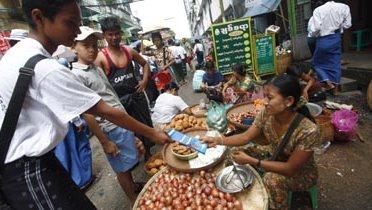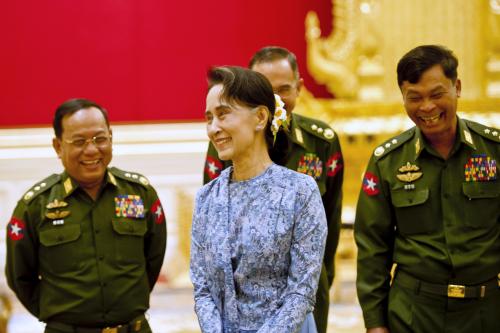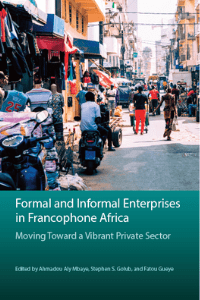Myanmar/Burma is in the fifth year of three immensely challenging transitions: from conflict to peace, from authoritarian to democratic rule, and from a closed to an open economy.
A perilous point in this process is rapidly approaching: the election on November 8 that will produce a new national legislature and new legislative assemblies in 14 regions and states, and a new government in the first quarter of 2016.
Ending the civil war that has raged non-stop since independence in 1948 has been the first priority of the government led by President Thein Sein that took office in March 2011. It is now on the verge of concluding a National Ceasefire Agreement designed to end active fighting and begin a “political dialogue” to produce a consensus on constitutional changes that will lay the basis for a sustainable federal political system.
The National League for Democracy, led by Aung San Suu Kyi, is poised to win most of the elected seats in the national legislature, and possibly a majority of the total seats including the 25 percent reserved for the military. The election may be sufficiently free and fair to be credible. International observer teams are already in place to monitor the campaign.
Economic growth in the past five years has been rapid, with the IMF forecasting a rise in GDP of 8.5 percent in the fiscal year ending March 2016. The benefits of growth, however, have been concentrated in the sprawling metropolitan area of Yangon/Rangoon and other urban centers. Household incomes in the rural sector remain depressed and poverty is deep in the conflict areas on Myanmar’s mountainous borders. The booming economy of Yangon has been driven by a massive influx of foreigners seeking to support and profit from Myanmar’s opening, with office rents soaring to among the highest in the world.
The Thein Sein government made some courageous economic policy decisions in its early years that underlie optimistic views of Myanmar’s prospects. In particular, it abandoned a grossly overvalued official exchange rate in April 2012 and moved to a managed float. In mid 2013, it awarded licenses to two foreign companies that are building out the mobile phone network at a record pace.
A comprehensive assessment of Myanmar’s economic prospects yields leaves little room for optimism, however. Even if the national ceasefire is respected, the election is carried out smoothly, and a new government emerges that is distinctly less authoritarian, it seems unlikely that Myanmar will sustain its high GDP growth rate for more than a couple of years.
A recent study of the state-owned enterprise sector hints at how difficult Myanmar’s economic transition will be. The worst chapter in Myanmar’s post-independence economic history began with General Ne Win’s coup in 1962. He adopted an extreme socialist development strategy while pursuing military campaigns to subdue and assimilate the country’s ethnic minorities. All modern businesses of significance were nationalized. The economy became in effect one enormous state-owned enterprise. Poverty and misery increased over the next 26 years of his rule, eventually provoking the uprising in 1988 that catapulted Aung San Suu Kyi into leadership of the opposition.
The military junta that suppressed the uprising abandoned the socialist path and began privatizing state-owned enterprises. Many of the best enterprises were taken over by two military-controlled business conglomerates. Others went into the hands of a small group of cronies. At the same time a number of new state-owned enterprises were created such that in 2011 state-owned enterprises were still at the center of the Myanmar economy, especially in the sectors of energy, mining, and banking.
The Thein Sein government adopted an impressive policy of privatization, but implementation has been hobbled by weak state capacity and strong vested interests. The “Privatization Commission” that was supposed to drive reforms in this area has been moribund and no other government agency has taken a leading role. Instead, every ministry is engaged in discretionary, non-transparent actions to transfer state assets to private control, typically through long-term leases. The flagrant example of this process is leasing government land in Yangon to developers of hotels, offices, malls, and luxury apartment buildings.
The state-owned enterprise sector will remain a drag on Myanmar’s economic progress. Bold reforms that may be proposed by the next government will be watered down by the legislature. The military will not cede control to civilians of its most lucrative rent-seeking activities. The woefully neglected education system will not produce enough quality graduates who can become globally competitive enterprise managers.
We can hope for a miracle: a genuinely civilian government next year that brings the civil war to an end and implements policies that raise household incomes in the rural sector where most of the population resides. But don’t hold your breath.
The Brookings Institution is committed to quality, independence, and impact.
We are supported by a diverse array of funders. In line with our values and policies, each Brookings publication represents the sole views of its author(s).










Commentary
State-owned enterprises and the future of the Myanmar economy
September 16, 2015